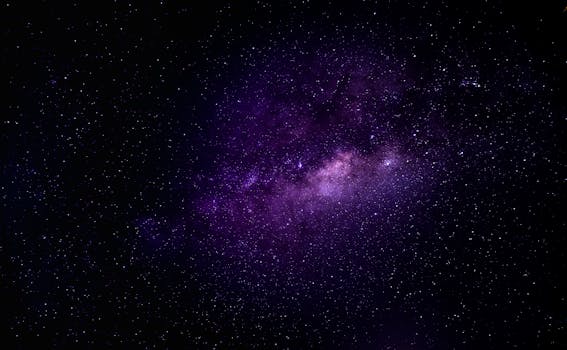
“
Beyond the Milky Way: Imagining New Worlds and Possibilities – Exploring the Frontiers of Space
Beyond the Milky Way: Imagining New Worlds and Possibilities is a concept that has fascinated humans for centuries. The idea of exploring the unknown and the uncharted has driven us to push the boundaries of space travel and discovery. In this article, we will explore the frontiers of space and the possibilities that lie beyond our home galaxy, the Milky Way.
Introduction to the Milky Way
The Milky Way is a barred spiral galaxy that is estimated to be around 100,000 light-years in diameter. It is thought to contain hundreds of billions of stars, as well as various types of interstellar gas and dust. The Milky Way is just one of the billions of galaxies that make up the observable universe, and it is believed to be a fairly typical example of a spiral galaxy.
Exploring the Galaxy
Over the years, humans have made significant progress in exploring the Milky Way. We have sent spacecraft to the outer reaches of the solar system, and have even landed robots on the surface of Mars. However, despite these achievements, there is still much that we do not know about the galaxy. There are many regions that are still unexplored, and it is likely that there are many more discoveries to be made. For more on this topic, check out our article on Soaring Through the Cosmos.
New Worlds and Possibilities
As we explore the galaxy, we are also discovering new worlds and possibilities. Exoplanets, which are planets that orbit stars other than the Sun, have been discovered in large numbers in recent years. Some of these planets are believed to be similar in size and composition to Earth, and may potentially be capable of supporting life. The discovery of exoplanets has opened up new possibilities for the search for life beyond Earth, and has raised hopes that we may one day find evidence of extraterrestrial life. This quest is further explored in our article The Infinite Universe of Imagination.
Takeaways
- The Milky Way is a barred spiral galaxy that is estimated to be around 100,000 light-years in diameter.
- There are many regions of the galaxy that are still unexplored, and it is likely that there are many more discoveries to be made.
- Exoplanets have been discovered in large numbers in recent years, and some of these planets are believed to be similar in size and composition to Earth.
- The discovery of exoplanets has opened up new possibilities for the search for life beyond Earth, and has raised hopes that we may one day find evidence of extraterrestrial life.
Conclusion
In conclusion, the concept of Beyond the Milky Way: Imagining New Worlds and Possibilities is a fascinating one that has captured the imagination of humans for centuries. As we continue to explore the galaxy and discover new worlds, we are also discovering new possibilities for the search for life beyond Earth. The future of space exploration is exciting and full of possibilities, and it will be interesting to see what new discoveries are made in the years to come.
Imagining the Future of Space Exploration
As we look to the future of space exploration, it is clear that there are many exciting possibilities on the horizon. With the development of new technologies and the continued exploration of the galaxy, it is likely that we will make many new discoveries in the years to come. Some of the possibilities that are being explored include the colonization of other planets, the establishment of permanent human settlements in space, and the search for extraterrestrial life. For more insights, read our article Beyond Stars: Where Imagination Takes Flight.
Section 3: The Search for Extraterrestrial Life
The search for extraterrestrial life is one of the most exciting and intriguing areas of space exploration. With the discovery of exoplanets and the development of new technologies, it is now possible to search for life beyond Earth in ways that were previously not possible. Some of the methods that are being used to search for extraterrestrial life include the study of the atmospheres of exoplanets, the search for biosignatures, and the use of robotic spacecraft to explore the surfaces of other planets.
Section 4: The Colonization of Other Planets
The colonization of other planets is another area of space exploration that is being explored. With the development of new technologies and the continued exploration of the galaxy, it is now possible to consider the possibility of establishing human settlements on other planets. Some of the planets that are being considered for colonization include Mars, the Moon, and the moons of Jupiter and Saturn.
Section 5: The Future of Space Exploration
In conclusion, the future of space exploration is exciting and full of possibilities. With the development of new technologies and the continued exploration of the galaxy, it is likely that we will make many new discoveries in the years to come. Some of the possibilities that are being explored include the colonization of other planets, the establishment of permanent human settlements in space, and the search for extraterrestrial life.
As we look to the future of space exploration, it is clear that there are many exciting possibilities on the horizon. With the development of new technologies and the continued exploration of the galaxy, it is likely that we will make many new discoveries in the years to come. Whether it is the colonization of other planets, the establishment of permanent human settlements in space, or the search for extraterrestrial life, the future of space exploration is full of excitement and possibility.
See more:
https://www.nasa.gov
https://www.space.com
https://www.esa.int



